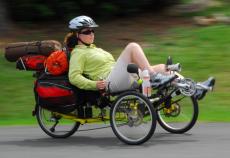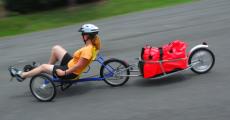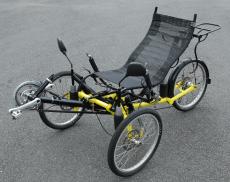Regular readers will know that when it comes to shopping, I am happiest digging through the junk at a tip shop, foraging at garage sales or even – if this can be called ‘shopping’ – picking up stuff that others have dumped by the side of the road. In short, glittering neon’d shops and my version of fun don’t go together. (Except, it needs to be said, when buying cameras or watches…)
So today was very unusual. I spent nearly all day with my wife Georgina and 3-year-old son Alexander shopping for brand new items: assessing and evaluating; picking up things, weight being felt in hand; turning products over and over while assessing quality; even putting some things down on the ground and lying on them. Yes, right there in the shop.
And when the day was finished, we’d spent something like AUD$700.
So what were we buying? Camping gear!
After doing a long drive in a diesel Hyundai i30 fell through, both Georgina and I felt all psyched-up for a tour. The Hyundai trip was going to have been a very long one, but when I was mulling-over its cancellation, I realised that the distance travelled wasn’t of that much importance. In fact, in my view, neither was the fact that it was to be done in a car.
Then, almost of its own volition, the thought popped into my head: why not go touring on our trikes?
Both Georgina and I are enormous fans of recumbent pedal trikes. These vehicles, which are simply nothing like a bicycle to pedal, incorporate stability and cornering fun in a way impossible to imagine if you’ve not experienced it. (In Georgina’s trike-selling business, over three-quarters of those who book a test ride buy a trike.)

 Julian Edgar, 50, has been writing about car modification and automotive technology for nearly 25 years. He has owned cars with two, three, four, five, six and eight cylinders; single turbo, twin turbo, supercharged, diesel and hybrid electric drivelines. He lists his transport interests as turbocharging, aerodynamics, suspension design and human-powered vehicles.
Julian Edgar, 50, has been writing about car modification and automotive technology for nearly 25 years. He has owned cars with two, three, four, five, six and eight cylinders; single turbo, twin turbo, supercharged, diesel and hybrid electric drivelines. He lists his transport interests as turbocharging, aerodynamics, suspension design and human-powered vehicles.



